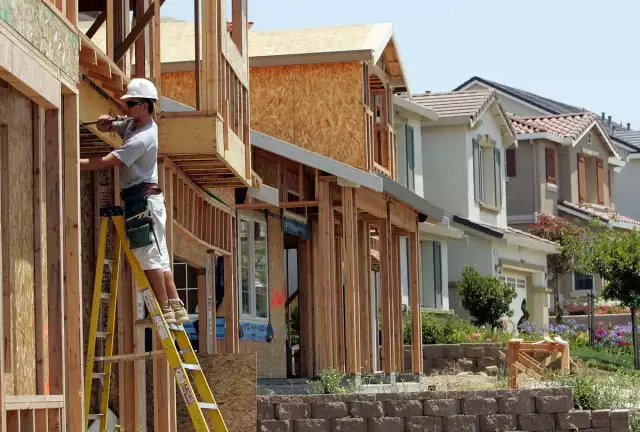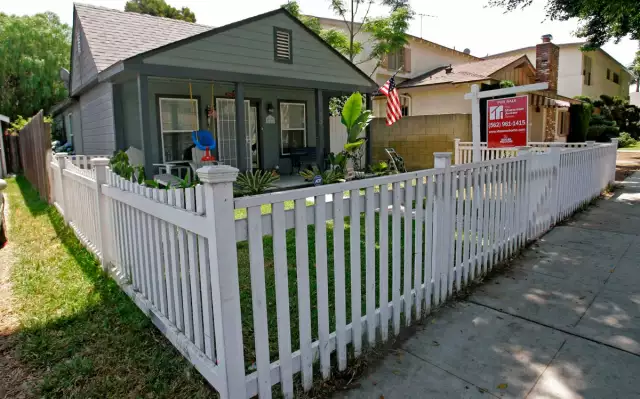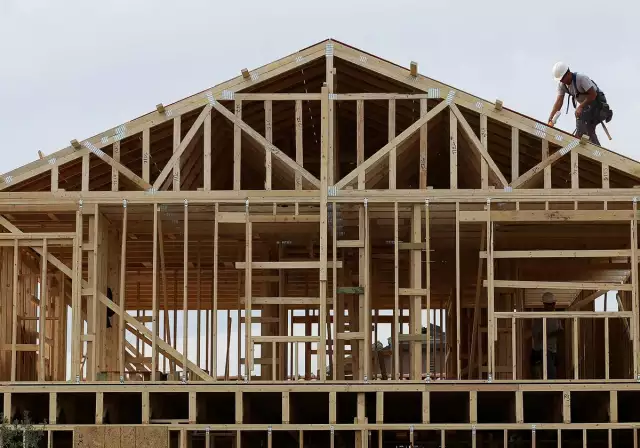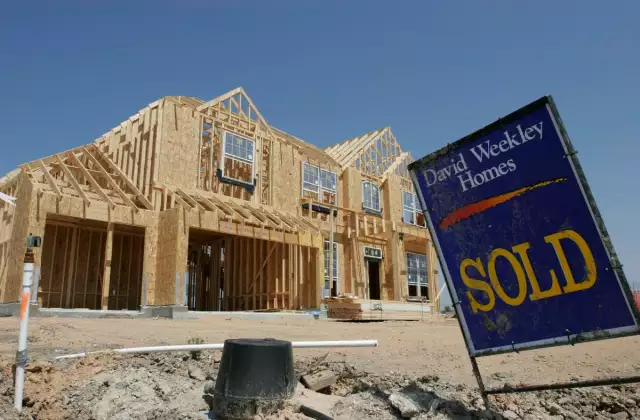Housing Has A Troubled Future
Housing Has A Troubled Future
A construction worker hammers nails into the framing of a new homel. (Photo by Justin ... [+] Sullivan/Getty Images)
Getty ImagesA construction worker hammers nails into the framing of a new homel. (Photo by Justin ... [+] Sullivan/Getty Images)
Housing still enjoys some considerable support, but contrary forces are building. In time – say late this year and certainly by 2023 – negative influences will come to predominate, and the sector will suffer a correction.
At present the picture looks mixed. Residential construction activity remains strong. The Commerce Department reports that starts on building new residences, after a 6.8% jump in February, rose another 0.3% in March. Construction is almost 4% higher than March 2021. Strength showed in every region of the country. In contrast, the Commerce Department reported that sales of private dwellings, after a 2% decline in February, fell and additional 8.6% in March. Sales are some 12.6% lower than a year ago.
Building will not continue to rise for long while sales decline. The only reason it continues now is because builders were slow off the mark when sales surged post pandemic and are now playing catch up. No doubt construction also reflects a measure of speculation on a continued rapid rise in housing prices, which, according to the National Association of Realtors (NAR) have risen some 15% nationally over the past year. In time, however, the downturn in sales will set the tone for the whole sector.
The correction will likely develop in slow motion. Inflation and fears of inflation will slow any sales decline. Especially the kind of price pressures the United States is suffering presently always creates an interest in real estate because home values tend to outpace the cost of living. That certainly was the case during the last great inflation in the 1970s and early 1980s. With general price pressures continuing to build as they are, people will, to the extent that they can, continue to focus on real estate, especially since for most Americans it is the only way they have to protect their wealth from the ravages of inflation.
Otherwise, the forces for decline are gaining force. One of them is the rising price of housing itself. Another is the ongoing rise in mortgage rates. Together, these trends are making homebuying unaffordable for an increasing portion of the population. Consider that the 15% rise in the median price of home nationally far outstrips the 3.5% rise in median family income. Rising mortgage rates add to the pressure. The Federal Housing Finance Agency notes that the average mortgage rate in the country has risen from 2.86% a year ago to 3.83 last February, the most recent period for which such data are available. Since, the Wall Street Journal reports, the average 30-year mortgage rate has risen well above 5%. That is a 75% rise in the cost of financing.
Combined, the rise in financing costs and the price of housing has already increased by some 30% the relative burden of supporting a mortgage on the median home. As of the latest NAR calculation, the cost of supporting such a mortgage has risen from under 15% of median family income a year ago to almost 20% presently, making home ownership nearly 30% more burdensome than it was this time last year. This deterioration in affordability typifies every region of the country. Though some areas have suffered more than others, with the greatest drop in affordability in the south and the least in the west, all show significant affordability declines. People will stretch, of course, for the sake of someone’s dream and to secure an inflation hedge, but as costs rise, an increasing number will give up on the idea of purchasing, at least for a while.
Since the Federal Reserve (Fed) promises to continue raising interest rates, including mortgage rates, and since home prices show no sign of slowing in this country’s general inflation, housing seems set to become less and less affordable for the average American, whatever his or her desires. A downturn becomes unavoidable. Because the nation suffers none of the excesses that existed prior to the last great housing crash in 2008-09, the coming correction should be much less severe. As already indicated, it could occur in slow motion. But a correction is clearly in the cards.







